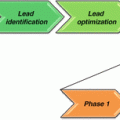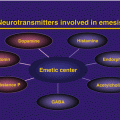Marker
Description
Expression in normal tissues or stem cells
Expression in tumours or cancer stem cells
ALDH1
NAD(P)+−dependent enzyme oxidizing retinaldehyde to retinoic acid andacetaldehyde to acetic acid
Breast adult
Medulloblastoma, glioma, head and neck cancers, lung, breast, pancreas, bladder, prostate
BMI-1
Component of multiprotein transcriptional repressor Polycomb group PRC1-like
Hematopoeitic, neural, intestine, breast and prostate
Breast, prostate, neuroblastomas, leukemias
CD29/Integrin-β1
Membrane protein involved in cell-cell and cell-extracellular matrix adhesion, essential for cell proliferation, migration, invasion and survival
Hematopoietic and mesenchymal stem cells, and hematopoietic and endothelial progenitors
Breast, colon
CD24/heat stable antigen
Glycoprotein marking exosomes, binding to P-Selectin on activated platelets and vascular endothelial cells
B and T immune cells, keratinocytes, myofibres and neuroblast
Breast, pancreas, liver, oesophagus, gastric
CD34
Transmembrane adhesion protein
Hematopoietic and mesenchymal stem cells, hematopoietic and endothelial progenitors
Leukemias, sarcomas
CD44
Membrane adhesion protein and hyaluronan receptor, important for cell proliferation, differentiation, migration, angiogenesis, presentation of cytokines, chemokines, and growth factors to their receptors, and docking of proteases at the membrane
Hematopoietic stem cells and progenitors, pluripotent stem cell
Breast, pancreas, liver, oesophagus, gastric
CD90/Thy-1
Glycoprotein involved in cell-cell and cell-matrix interactions anchored to membrane by glycosylphosphatidylinositol-expressed mainly in leukocytes
Thymus and hepatic progenitors, mesenchymal and hepatic stem cells
Breast cancer, glioblastomas
CD105/Endoglin
Integral transmembrane glycoprotein, TGFBR2 co-receptor for TGF-β and mediating fetal vascular/endothelial development
Vascular endothelial cells, chondrocytes, syncytiotrophoblasts of term placenta and mesenchymal stem cells
Osteosarcomas, leukemia, ovarian, laryngeal and gastrointestinal stromal cancers, melanoma
CD117/c-kit
Membrane-bound or soluble growth factor, also called Stem Cell Factor (SCF) expressed by fibroblasts and endothelial cells promoting proliferation, migration, survival, and differentiation of hematopoietic progenitors, melanocytes, and germ cells
Progenitor cells
Breast, ovarian, lung, glioblastomas
CD133/Prominin-1
Transmembrane glycoprotein expressed in membrane protrusions and binding cholesterol
Hematopoietic and glial stem cells, kidney, mammary gland, salivary glands, testes and placental cells and endothelial progenitor cells
Prostate, gastric, and breast carcinomas, glioblastomas, melanomas
CDw338/ABCG2
Efflux protein involved in detoxification of xenobiotic substrates in various organs such as liver, intestine, placenta, and blood brain barrier
Embryonic and hemtopoietic stem cells, various adult stem cells
Glioma/Medulloblastoma, head and neck cancers, lung, prostate, melanoma, osteosarcoma
NANOG
Transcription factor part of the core pluripotent factors acting closely with OCT4 and SOX2, involved in the maintenance of pluripotency and self-renewal of embryonic stem cells
Embryonic stem cells and induced pluripotent stem cells (iPSC)
Breast, cervix, oral, kidney, prostate, lung, gastric, brain, and ovarian cancer, lung adenocarcinoma cells
NESTIN
Class VI intermediate present in vertebrates, marker of Neural stem cells both during development and adult brain
Neural stem cells, brain progenitor and hematopoietic progenitors
Glioblastomas, melanomas
OCT4
Transcription factor part of the core pluripotent factors acting closely with NANOG and SOX2, involved in the maintenance of pluripotency and self-renewal of embryonic stem cells
Embryonic stem cells and induced pluripotent stem cells (iPSC)
Many carcinomas, ovarian, endometrium and lung adenocarcinoma
SCA-1
Glycosyl phosphatidylinositol-anchored cell surface protein
Stem cells, such as hematopoietic stem cells and progenitors, and differentiated cells in a wide variety of tissues/organs
Breast and prostate
SOX2
Activator or suppressor of transcription acting closely with OCT4 and NANOG, involved in the maintenance of pluripotency and self-renewal of embryonic stem cells
Embryonic stem cells, induced pluripotent stem cells (iPSC) and neural stem cells
Glioblastomas, medulloblastoma, oligodendroglioma, melanoma, osteosarcoma, prostate, small-cell lung cancer, lung squamous cell carcinoma, lung adenocarcinoma, non-small cell lung cancer
H type 1
Stage-specific embryonic antigen-5 (SSEA-5), carbohydrate-associated molecule involved in controlling cell surface interactions during development, carried on proteins
Embryonic stem cells and induced pluripotent stem cells (iPSC)
Germ cell carcinomas
Fucα1-2Galβ1-3GlcNAcβ1-
CD15
Lewis X, stage-specific embryonic antigen-1 (SSEA-1) carbohydrate-associated molecule involved in the control of cell interactions during development carried on lipids or proteins
Embryonic, mesenchymal and neural stem cells
Glioblastomas
Galβ1-4[Fucα1-3]GlcNAcβ1-3Galβ1-
CD60a/GD3
Ganglioside, messenger in apoptosis induced by CD95 pathway
Neural stem cells
Differentiated germ cell carcinomas, melanomas
NeuAcα2-8NeuAcα2-3Galβ1-4Glcβ1-
CD77/Gb3
Globotriaosylceramide antigen, Burkitt lymphoma antigen Galα1-4Galβ1-4Glcβ1-
Activated B-cells located in tonsil, mucosal lymphoid tissues, peripheral blood, bone marrow and spleen
Burkitt lymphoma, breast cancer, germ cell carcinomas
CD173/H type 2
Saccharide antigen carried on proteins or lipids, expressed mainly during early hematopoiesis, on endothelial and bone marrow stromal cells
Embryonic, mesenchymal and neural, hematopoietic progenitors
Fucα1-2Galβ1-4GlcNAcβ1-
CD174
Lewis Y; carried on proteins or lipids on erythrocytes
Hematopoietic progenitor cell
Breast cancer
Fucα1-2Galβ1-4[Fucα1-3]GlcNAcβ1-
CD175
Histo-blood group carbohydrate structures carried on proteins GalNAcα1-
Embryonic stem cells
CD176
Thomsen-Friedenreich antigen, core-1; expressed on glycoproteins and glycosphingolipids
Embryonic stem cells
Diverse carcinomas and leukemias
Galβ1-3GalNAcα1-
GD2
Glycosphingolipids containing the sialic acid residues in their carbohydrate structure
Neural and mesenchymal stem cells
Differentiated germ cell carcinomas, breast cancer, melanomas
GalNAcβ1-4[NeuAcα2-8NeuAcα2-3]Galβ1-4Glcβ1-
Gb4
Globoside characterized as a stage-specific embryonic antigen (SSEA), highly expressed during embryogenesis
Germ cell carcinomas
GalNAcβ1-3Galα1-4Galβ1-4Glcβ1-
Gb5
Globoside stage-specific embryonic antigen-3 (SSEA-3), highly expressed throughout preimplantation in mouse
Embryonic stem cells, induced pluripotent (iPSC) and mesenchymal stem cells
Breast cancer, germ cell carcinomas
Galβ1-3GalNAcβ1-3Galα1-4Galβ1-4Glcβ1-
Sialyl-Gb5
Stage-specific embryonic antigen (SSEA-4), highly expressed throughout preimplantation in mouse
Embryonic stem cells, induced pluripotent (iPSC) and mesenchymal stem cells and breast progenitor cell
Germ cell carcinomas
NeuAcα2-3Galβ1-3GalNAcβ1-3Galα1-4Galβ1-4Glcβ1-
Globo-H
Antigenic carbohydrate carried on proteins or lipids
Various types of cancers, often in cancers of breast, prostate and lung at the cell surface
Fucα1-2Galβ1-3GalNAcβ1-3Galα1-4Gal-
TRA-1-60
Tumor-recognition antigen; carried on protein
Embryonic and mesenchymal stem cells
Teratocarcinomas
Sialylated keratan sulfate proteoglycan
2.1.2 Signalling Pathways and Microenvironment
Niches are complex structures integrating interactions between stem cells and the neighbouring cells (such as stromal, mesenchymal and immune cells) either by direct interactions or by secretion of signalling factors [35, 36]. Both stromal and stem cells also interact with the extracellular matrix, a complex network of macromolecules. The disorganization of the interactions existing within the niche might provide strong signals for normal stem cells to proliferate and/or differentiate, and may favour tumour initiation and progression, in combination with other stimulations such as inflammation and angiogenesis [37]. Like normal stem cells, CSC depend on the microenvironment cues to retain their ability to self-renew or differentiate [36], and the niche contributes to their resistance to therapy by sheltering them from the genotoxic treatments [38, 39]. Aberrant activation of key signalling pathways and/or their mediators (such as Hedgehog, Notch, Wnt/β-catenin, HMGA2, Bcl2, Bmi-1) involved in the control of self-renewal, proliferation and differentiation of normal stem cells may also contribute in the acquisition of new stemness properties by CSC [40]. Moreover, the microenvironment of many ASC is hypoxic (low oxygen tension) and modulates their self-renewal, proliferation and cell-lineage commitment [34, 41]. A synergistic effect of Notch and hypoxia-induced pathways is correlated with increased metastasic tumour potential and poor survival of patients, suggesting that a crosstalk between these pathways is essential to cancer initiation and progression [41].
2.1.3 New Prospects in Treatment
Standard cancer treatment s by chemotherapy, radiotherapy and surgical ablation have mostly focused on shrinking the tumour size, but CSC might persist after therapy and cause the tumour to relapse. Indeed, CSC may escape treatment due to different sensitivities and specificities to the radiation or chemotherapy used, but also because they have already metastasized in patients newly diagnosed with cancer [42]. In some patients, CSC are in a dormant state, and stress or inflammation reactivate their proliferation and differentiation by release of pro-inflammatory cytokines and chemokines, such IL-6, IL-8, MCP1, CCL5 [43, 44]. Even more worrying, the conventional radiation and chemotherapy may increase CSC numbers in a process analogous to the normal repair-process during tissue damage, by which dying cancer cells might release cytokines that stimulate CSC proliferation and/or differentiation [45, 46]. Thus, to implement efficient treatments targeting specifically CSC and preventing tumour recurrence, new approaches are being developed to destabilize CSC stemness [46]. One strategy is to inhibit the signalling pathways promoting self-renewal and survival of CSC, such as Hedgehog, Notch, Wnt/β-catenin using combinations of specific inhibitors affecting these pathways. A limitation to this approach is the necessity of these pathways for normal stem cells function in patients. Nevertheless, preclinical and clinical studies with Notch signalling inhibitors showed the decrease in the number of breast CSC in animal models, and a promising decline of the disease progression when used in combination with the anti-mitotic compound docetaxel [47]. Moreover, it was recently reported that down-regulation or inhibition by small molecule compounds of BMI-1, a polycomb repressor involved in the maintenance of normal several tissues stem cells or CSC [48–52], diminished CSC proliferation, tumour growth, tumorigenic potential and limited metastasis [53, 54]. CSC may also be resistant to conventional chemotherapy due to overexpression of detoxifying enzymes, membrane transporters or pumps enhancing the elimination of pharmacological agents [55]. Several groups have reported an increase of sensitivity to chemotherapy and radiation by treatment with drugs targeting these transporters in vitro and in vivo in lung cancer cells [56]. The inhibition of aldehyde dehydrogenase activity, a hallmark of human breast carcinoma CSC [57], by inhibitors such as diethylamino-benzaldehyde or all-trans retinoic acid led to a decrease of tumour aggressiveness and increased sensitivity to chemotherapy [58].
Targeting CSC specific surface markers or using these markers to enhance CSC death is also a promising strategy. The blockade of overexpressed CXCR1, a IL-8 receptor, in human breast CSC by specific antibodies or by repertaxin, a small inhibitor of CXCR1, reduced tumour growth, CSC numbers and their metastatic potential in animal models [46]. In human melanoma CSC, down-regulation of the CD133 surface marker by RNA interference reduced their metastatic potential in animal models [59]. The recognition of CD133 by specific monoclonal antibodies also led to a specific cytotoxic effect on melanoma CSC and hepatoma cells [59, 60]. The modulation of miRNA expression in CSC might also provide new means to control CSC fate [61]. Indeed, overexpression of miR-34a in prostate CD44-positive CSC, where it is normally down-regulated, inhibited self-renewal of CSC as well as tumour development [62].
Alternative therapeutic strategies aiming to destabilize the interactions between CSC and their niche, and promoting cell cycle entry of quiescent CSC to enhance their sensitivity to chemotherapy/radiotherapy present a great potential. Hypoxia inducible factors (such as HIF-1 and HIF-2) have often been targeted in cancer therapies because they regulate genes critical for tumour cells survival, metabolic adaptation, angiogenesis and metastasis [63
Stay updated, free articles. Join our Telegram channel

Full access? Get Clinical Tree





